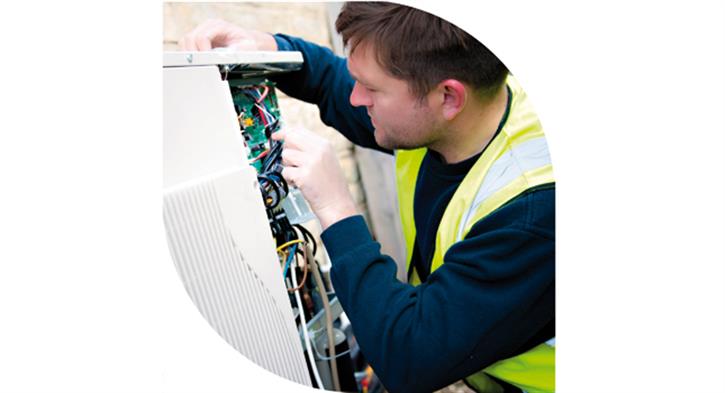

Carl Dickinson explains the implications of the European legislation that will see bans on the use of various refrigerants.
Air conditioning systems are continuing to evolve and, as a result, more and more people are experiencing the benefits of comfortable working, living and leisure conditions that are made possible with high performance systems driven by the latest technology.
Some air conditioning systems even use heat pump technology to provide heating, cooling and hot water where required. Such heat pumps require only a small amount of electricity to harvest, upgrade and move heat from one location to another and meet the demand for ever improving energy efficiency which is being driven by tough legislation and robust government targets.
But it isn’t just energy efficiency that is the target for legislation in the air conditioning industry – recent changes to the F Gas Regulation will have an equally dramatic effect on how the industry operates.
Significant changes
The F-Gas Regulation first came into force in 2006 and a full introduction was seen in the UK in July 2008, with the main focus on the containment and recovery of certain fluorinated gases, including R410A.
However, in March 2014 the European Union passed, by an overwhelming majority, a piece of legislation that will see the phase-down of F Gases and bans on the use of a long list of refrigerants in new and maintained equipment.
This regulation has been on the horizon for the air conditioning industry ever since the 2006 F-Gas Regulation came into force.
Then HFCs were the new frontier in a shift towards environmentally friendlier refrigerants. Nine years on, the phase-down programme and bans imposed in 2015 confirm that HFCs are now firmly in the sights of the legislators.
The refrigerants that have become commonplace will gradually be replaced by new low GWP alternatives, requiring the air conditioning industry to work together with end users to ensure the safe and competent handling of these new substances.
The need for training
While the regulations may have a great impact on the industry, training and certification remains largely unchanged from the 2006 regulation, which states that individuals and contractors must be certified to carry out installation, servicing, repair, maintenance, repair leakage checking and recovery.
Decommissioning has been added to this list and, additionally, information on relevant technologies to replace or reduce the use of fluorinated greenhouse gases and their safe handling must also be covered in the training process.
However, the fact that it remains largely unchanged should not be taken lightly, because it merely points to the fact that the training and certification process was fairly comprehensive when it was first introduced. As a result, qualifications and certificates issued under the EU’s 2006 F Gas regulation are still valid and installers do not need to apply for re-certification under the new regulations.
Who needs to be certified?
The F Gas Regulations apply to everyone, from sole traders through to large organisations. Any business completing the installation or servicing of refrigeration, air conditioning or heat pump equipment that contains, or is designed to contain, F Gas refrigerants must obtain company F Gas certification, which must be renewed every three years.
There are three designated Company Certification bodies: Bureau Veritas, Quidos and Refcom. They each offer four different levels of certification, which allow personnel to carry out different activities.
• Category I: Certificate holders can perform all refrigerant handling activities for any size of RAC systems containing HFC refrigerants. This includes leakage checking, refrigerant recovery, installation, maintenance and servicing
• Category II: Certificate holders may carry out refrigerant recovery, installation, maintenance and servicing, in relation to RAC systems containing less than 3kg of F Gases (or less than 6kg for systems that are hermetically sealed). Category II certificate holders may also carry out leak checks on any plant provided that it does not entail breaking into the refrigeration circuit containing fluorinated greenhouse gases
• Category III: This enables the holder to conduct refrigerant recovery in relation to RAC systems containing less than 3kg of fluorinated greenhouse gases (or less than 6kg for systems that are hermetically sealed)
• Category IV: Certificate holders may carry out leak checks on any plant provided that it does not entail breaking into the refrigeration circuit containing fluorinated greenhouse gases.
If your company achieves certification you must also be able to demonstrate that you employ sufficient trained staff to carry out your work and that you have procedures in place for the safe handling of F Gases and to minimise emissions.
While the regulation changes may have a great impact on some areas of the industry, for installation companies, meeting the new requirements is not such an onerous task because with the proper training these challenges can be met head on. After all, we are already well versed in falling into step with the march towards a more environmentally friendly future.
Carl Dickinson is product marketing executive of Mitsubishi Electric.
If you'd like to keep up-to-date with the latest developments in the heating and plumbing industry, why not subscribe to our weekly newsletters? Just click the button below and you can ensure all the latest industry news and new product information lands in your inbox every week.